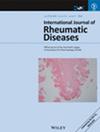Effect of Pilates Exercise on Health-Related Outcomes in Patients With Knee Osteoarthritis: A Systematic Review and Meta-Analysis
Abstract
Introduction
Knee osteoarthritis (KOA) is a chronic, progressive condition characterized by cartilage degeneration, synovial inflammation, and bone changes leading to pain and functional impairment. Despite the availability of various treatment options, including multidisciplinary approaches and muscle strengthening exercises, there remains uncertainty regarding the efficacy of Pilates as a therapeutic intervention for KOA. This highlights the need for a systematic review to synthesize current evidence on the effects of Pilates on health-related outcomes in this population.
Objective
This systematic review aimed to analyze the effects of Pilates compared to no exercise or conventional exercises on pain in individuals with knee osteoarthritis, as well as on secondary outcomes including function, quality of life, range of motion, balance, and adverse events. A secondary aim is to characterize the key components and implementation characteristics of the Pilates interventions applied in the included studies.
Methods
The review protocol has been registered in PROSPERO under the number CRD42024532727. Searches were conducted in PubMed/MEDLINE, Embase, CINAHL, CENTRAL, Scopus, Web of Science, and SPORTDiscus. Eligible studies included randomized controlled trials (RCTs) that investigated the impact of Pilates exercises in patients aged ≥ 18 years, diagnosed with KOA according to the Kellgren and Lawrence criteria or the American College of Rheumatology. Studies including participants with systemic arthritis, knee joint surgery within the past 12 months, lower extremity arthroplasty, intra-articular steroid injections within the past 6 months, or any neurological conditions were excluded. The risk of bias was assessed using the RoB 2 tool, and the quality of evidence was evaluated using the GRADE approach. Meta-analyses used random-effects models, with standardized mean differences (SMDs) and heterogeneity analyzed using I2 statistics.
Results
Eleven studies involving 476 participants were included, of which seven contributed to the quantitative synthesis. Based on this analysis, Pilates exercises reduced pain compared to no intervention (SMD −1.09; 95% CI −2.04 to −0.14; I2 = 66%; p = 0.02; 3 studies; n = 66; low-quality evidence), but did not demonstrate superiority over conventional exercises (SMD −0.28; 95% CI −1.06 to 0.50; I2 = 86%; p = 0.49; 5 studies; n = 210; very low-quality evidence). No significant improvement in knee health, assessed by the WOMAC total score, was found when compared to conventional exercises (SMD −0.14; 95% CI −1.12 to 0.85; I2 = 91%; p = 0.78; 4 studies; n = 202; very low-quality evidence), but knee range of motion increased with Pilates (SMD 1.07; 95% CI 0.56 to 1.57; I2 = 0%; p = 0.0001; 2 studies; n = 70; low-quality evidence). The qualitative analysis revealed evidence of improvements in balance, proprioception, and quality of life in some individual studies. However, the quality of the evidence was considered very low to low.
Conclusion
The Pilates method may be an effective alternative for the rehabilitation of patients with KOA, particularly in reducing pain compared to no intervention. However, it did not demonstrate superiority over conventional exercises in pain reduction or knee health improvement. Pilates was more effective in increasing range of motion compared to conventional exercises and showed benefits in proprioception, dynamic balance, and quality of life. The heterogeneity among the studies and the low quality of the evidence suggests caution in the interpretation of the results, with new RCTs potentially impacting the findings of this review.


 求助内容:
求助内容: 应助结果提醒方式:
应助结果提醒方式:


